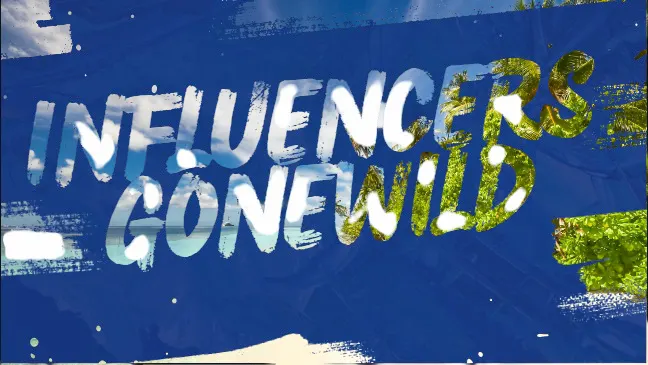In today’s digital age, social media influencers have become the new celebrities, shaping trends, opinions, and even consumer behavior. But with the race for virality, some influencers push boundaries—sometimes too far. The phenomenon of “Influencers gone. wild” refers to content creators who engage in extreme, controversial, or reckless behavior to gain attention, followers, and engagement.
From dangerous stunts to staged scandals, this trend raises important questions about ethics, mental health, and the responsibilities of online fame. In this in-depth article, we’ll explore:
-
What defines Influencers gone. wild and why they do it
-
The psychological and financial pressures driving extreme content
-
The consequences—both for influencers and their audiences
-
How brands and platforms are responding
-
The future of influencer culture
Let’s dive in.
What Does “Influencers Gone Wild” Mean?
The term “Influencers gone. wild” describes social media personalities who cross ethical, legal, or social boundaries to stay relevant. These influencers often prioritize shock value over authenticity, engaging in:
-
Dangerous stunts (e.g., reckless driving, extreme challenges)
-
Fake controversies (staged breakups, fake arrests)
-
Provocative behavior (explicit content, offensive remarks)
-
Exploitative trends (promoting scams, misleading endorsements)
For example, Logan Paul faced global backlash after posting a video featuring a suicide victim in Japan’s Aokigahara forest 514. Similarly, TikTok challenges like the “Skull-Breaker Challenge” have led to real-world injuries, proving how viral trends can turn harmful 14.
Why Do Influencers Go Wild?
Several factors drive this behavior:
-
Algorithm Pressure – Social media platforms reward engagement, pushing influencers toward extreme content for visibility 814.
-
Financial Incentives – Viral content attracts brand deals, sponsorships, and ad revenue 410.
-
FOMO (Fear of Missing Out) – The fear of losing relevance pushes influencers to escalate their antics 810.
-
Validation Addiction – Likes and comments trigger dopamine hits, reinforcing risky behavior 1014.
The Consequences of Influencers Gone Wild
While shocking content may bring short-term fame, the long-term effects can be devastating.
1. Damage to Personal Brand Reputation
Once an influencer crosses a line, rebuilding trust is tough. James Charles lost major sponsorships after inappropriate interactions with minors, proving that scandals have lasting career impacts 1214.
2. Legal and Ethical Issues
Some influencers face lawsuits, fines, or bans. For example, a “Devil Rider” influencer was arrested for dangerous motorcycle stunts, highlighting the real-world risks of viral fame 810.
3. Harm to Audiences
Young followers often mimic risky behavior. Studies show that 65% of teens feel pressured to copy influencers’ lifestyles, leading to dangerous trends 814.
4. Mental Health Struggles
The pressure to constantly “perform” leads to burnout, anxiety, and depression among influencers 1014.
How Brands and Platforms Are Responding
Brands: Risk vs. Reward
Companies now vet influencers more carefully. While edgy creators attract attention, brands like Nike and Coca-Cola prefer influencers who align with their values 414.
Platforms: Stricter Rules
Social networks are cracking down:
-
Warning labels on dangerous content 10
-
Demonetization of rule-breaking posts 10
-
Account suspensions for repeated violations 5
Yet, critics argue these measures aren’t enough—algorithm changes are needed to stop rewarding extreme behavior 814.
The Future of Influencer Culture: Can It Be Fixed?
The “influencers gone wild” trend isn’t disappearing, but there’s hope for a healthier balance:
✅ More Authenticity – Audiences now prefer real, relatable creators over shock-value content 14.
✅ Better Mental Health Support – Platforms are introducing wellness resources for influencers 10.
✅ Ethical Monetization – Micro-influencers (10K-100K followers) are gaining traction for their genuine engagement 15.
3 Short FAQs About Influencers gone. wild
1. Why do influencers engage in wild behavior?
They chase virality, financial gain, and fear losing relevance due to social media algorithms favoring extreme content 814.
2. What are the dangers of influencers gone wild?
Risks include legal trouble, lost sponsorships, mental health struggles, and harm to impressionable followers 510.
3. Can influencer culture become more ethical?
Yes—by promoting authenticity, platform accountability, and responsible brand partnerships 1415.
Final Thoughts
The “Influencers gone. wild” phenomenon reveals the dark side of digital fame—where clicks often outweigh consequences. While shocking content grabs attention, the long-term damage to reputations, mental health, and society is undeniable.
As audiences, we must support ethical creators and demand accountability from platforms. And as influencers, balancing creativity with responsibility is key to sustainable success.
What’s your take? Should social media do more to regulate extreme influencer behavior? Let us know in the comments!
Know More:- Influencers gone wild meg turney
